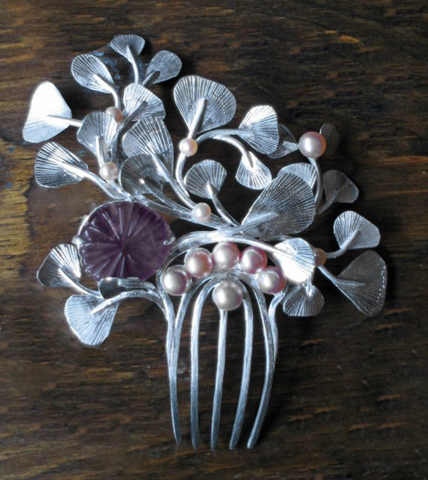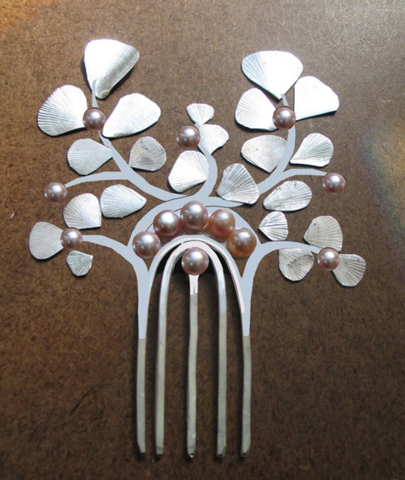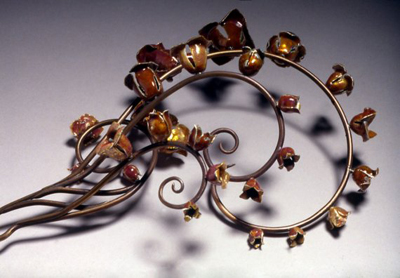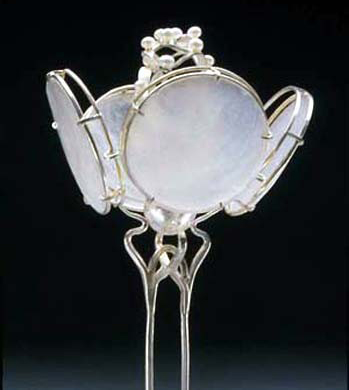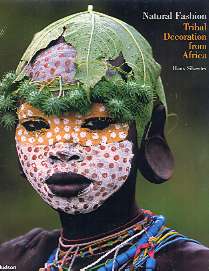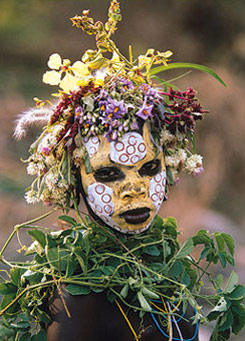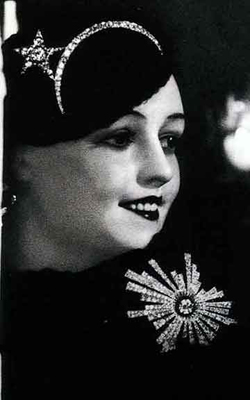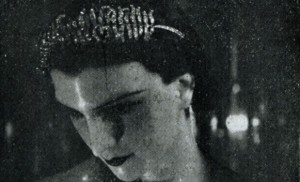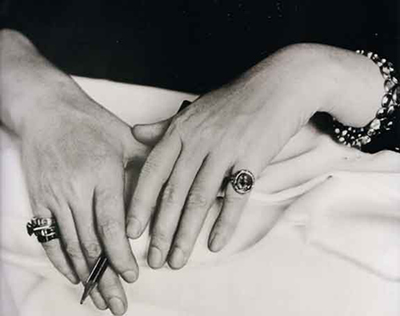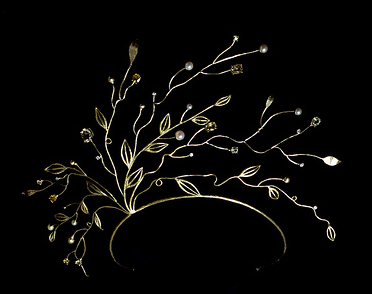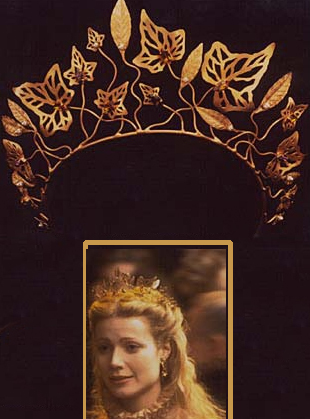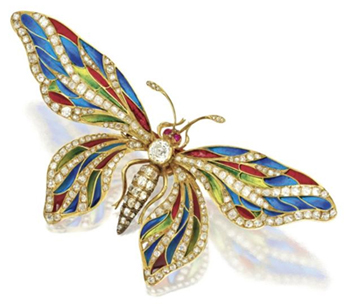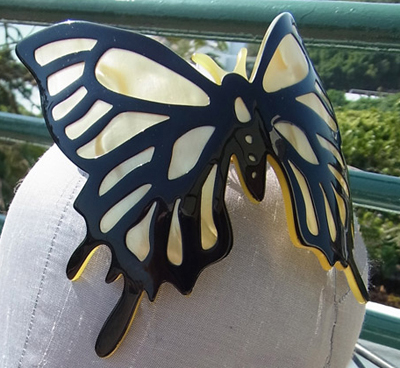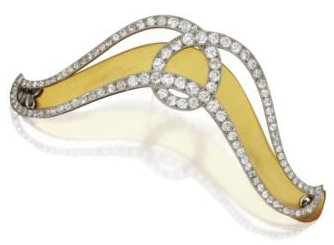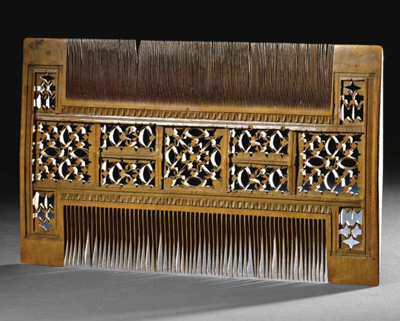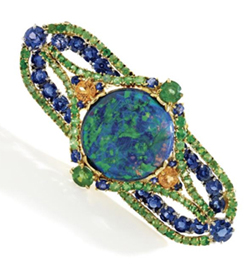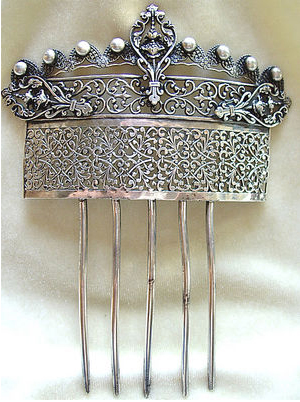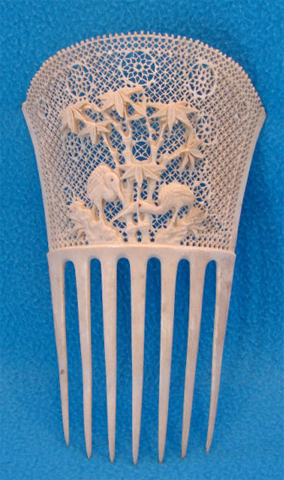From her home in Cranston, RI, Ms. Plante creates stunning, unique pieces from silver, amethyst, pearl, brass, and enamel. One of her hair pins includes Capiz shell, which is the outer shell of Placuna placenta, a marine mollusk found in the shallow coastal waters of the Philippines. Every element of her hair combs is hand sculpted. Her work reminds me very much of the British Arts and Crafts Movement. A graduate of the Rhode Island School of Design and of Dartmouth, she has won the Art Jewelry Forum’s Emerging Artist Award. Her shop can be found on Etsy, and these combs are $1200 each.
